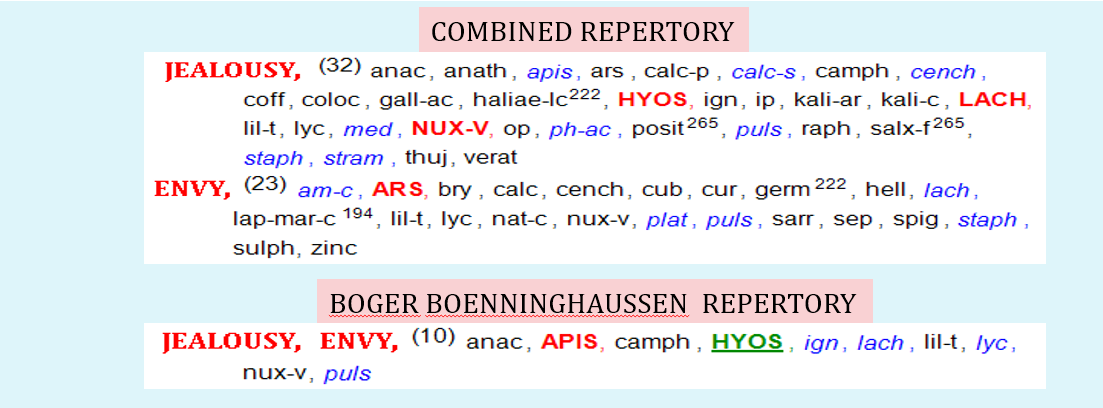
The Practical Repertory is a new repertory created by Dr Pravin Jain which is exclusively available for use with the Vision system. Here is an explanation of the need for a new Practical Repertory from Pravin Jain:
Introduction
Over the years there have been many advances in the various repertories, most adding many more remedies (especially from new provings) and more and more rubrics. However from the perspective of practical results, long lasting cures have not, in my opinion, been satisfactory. Cures in easier, 'psoric', cases were certainly demonstrated, but in syphilitic cases, for example, the practical results were not satisfactory. In recent years we have all seen a general decline of homeopathy and homeopathic results. So I felt there was a need to reinvent the approach.
I have found that the more remedies that were added to the repertories the lesser the number of long-lasting cures resulted. In my opinion unnecessary additions of unverified remedies in rubrics have only created more confusion. In my practice I have found that is is very important to only prescribe remedies which have a 'disposition' (e.g. obstinate, cheerful, proud) which is aligned with the patient (irrespective of other symptoms) - see Footnote 122 of the Organon. Often, remedies have been added to mind rubrics in the modern repertories without regard to their 'disposition' - this has resulted in poor or confusing results when repertorsing.
This new repertory is my first attempt to change the narrative away from 'more rubrics and remedies is always better' to 'more repeatedly verified information is better' based on practical results seen in real cases (hence the name Practical)
Case analysis
I decided to analyse almost 10,000 cases between 2012 and 2018 from the HomoeoCare group of clinics across India and found:
33% of the cases seen were pediatric cases and 5% were acute cases. 17% were Menstrual complaints, 14% were Hormonal complaints, 11% were Joint complaints, 13% were 'Lifestyle' disorders and 8% were Pathological (severe disease) cases.
I then studied all of the Vision software repertorisation charts used in these cases and found that only 500 different, unique rubrics were used in all of these cases. Yes, only 500 unique and different rubrics were used in 10,000 cases! This means we were using less than 1% of the existing rubrics available to us in the other repertories.
Approach to prescribing
In my personal experience, prescriptions based primarily on 'particulars' or local symptoms are far less effective. Even if there was an initial improvement this was often not long lasting. When I based my prescriptions more on the Mentals and Generals seen in the case this gave a much better result. As stated above I find it important to only select remedies that align with the patient's mental disposition. Additionally, a miasmatic understanding of the pathology also gives a better result. I have found that in pathological cases a good result can be achieved if the pathology is part of the totality that is repertorised.
These are my personal experiences as I have tried several different methods in my clinics and analysed the efficacy of each.
Basis for a new repertory
I have avoided including Particular rubrics in all chapters except for those actually pertaining to a body part (where you must have them of course) – and instead I have used more 'general' rubrics. I have used only verified and sourced remedies. Repertories I used as the source basis for inclusion of remedies were: Boger Boennninghausen (BBCR), Knerr, Boericke and Phatak.
I utilised a better chapter structure - as an easier to use structure helps the homeopath take less time to select the remedies.
Rubrics
This new repertory often utilises the Boenninghausen concept of a Grand Generalisation. In my cases where the Syphilitic miasm was prominent and where there was a lot of pathological symptoms and conditions I experienced much better results when these were used in the totality. Therefore in the chapters relating to body parts (the particulars chapters) I have utilised pathological general rubrics rather than listing each and every individual pathological rubric (as per the larger repertories). The result is a much easier to use set of particular chapters.
As an example consider these Mind rubrics:

Observe how the finer 'differentiation' of similar mental rubrics occurs in a modern repertory such as Combined. In my Practical Repertory I have tried to avoid such fine differentiation and have combined similar terms to make just one rubric where the homeopath does not have to worry about choosing exactly the 'right one' (see below for the rubric from Practical in Vision). As stated above, the remedies I included in the rubrics are derived from the Boger Boennninghausen (BBCR), Knerr, Boericke and Phatak repertories.

Chapters and structure
A mixed layout is used. The order of chapters in the repertory is influenced by the relative value of symptoms from most important to least important. So the most important chapters are listed first as a guide to the homeopath. The most important chapters 'Ailments From' and 'Cause-Effect' are listed at the very top to indicate to the homoepath that when these are present in the case they are highly significant.
Then come the chapters related to the Mind, i.e. Mind, Intellect and Delusions.
After these I then decided to use separate chapters for the following to stress their importance in regular use and to make them more easily accessible to homeopaths:
- Children
- Infants
- Food and Drinks
- Fever (Acutes)
- Injury
After the above I then include all the particulars chapters, from Head through to Skin. Finally, after all the particulars chapters I added a group of special chapters to provide easy access for the practitioner.
Following the particulars/body parts chapters, I decided to include a set of additional chapters to make the information in them easier to access. That is not to say there are of less importance than the particulars chapters becuase they follow these chapters. They are included after the particulars chapters simply to make them easy to access as they are to be used in specific situations.
These special chapters are: Locations, Sensations, Modalities, Tissues Miasmatic, Inflammation, Cancer, Constitution, Associated Diseases and Alternating Diseases.
The Modalities and Constitution chapters, specifically, are often used in practice as the final eliminating or differentiating factors in a case and in this way are better accessed separately.
The chapter called Tissues, Miasmatic is aimed at pathological (disease based) cases and is especially for those who prescribe based on the work of Vijayarkar. This teaches that PSORA – meaning inflammation, SYCOSIS – meaning growth and SYPHILIS – meaning destruction (this is based on Dr. Vijayakars book on Miasms). So if you see a specific disease you can determine which miasm is active on the affected tissues and then take the corresponding rubric.
Remedies
I have used all of the standard remedies commonly seen in other repertories. Additionally, I have admited so called 'newer' remedies only when I have used them extensively in my practice and seen their efficiacy repeatedly. Examples of such remedies would be Carc, Choc and Sac-alb. I have not admitted any remedies based only on their provings - this Practical Repertory only uses remedies seen to have worked in practice. That is not to say these new remedies are not useful, simply that I have not used them and cannot therefore admit them into my repertory. You can of course reference other repertories should you wish to utilise these remedies in your cases.
Dr Pravin Jain
Mumbai, India
(edited and arranged by David Witko)